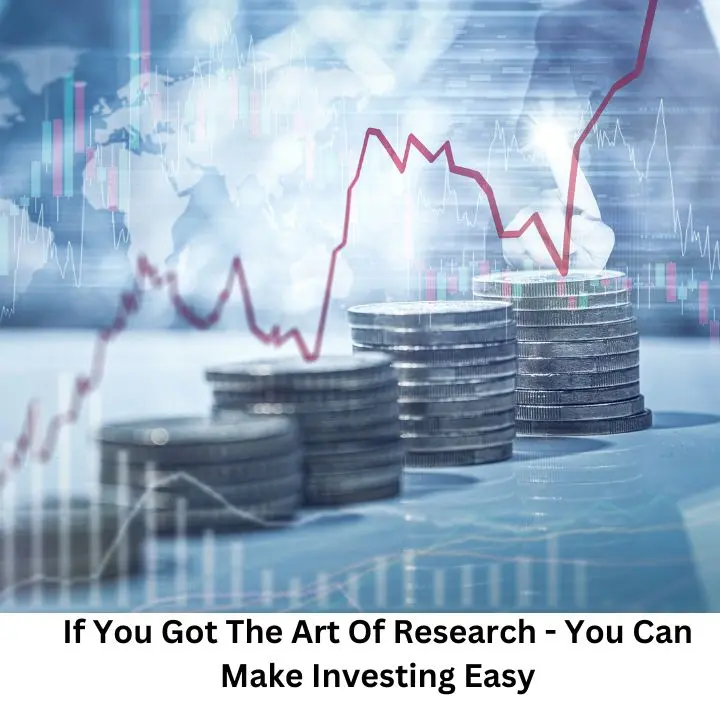Investing wisely is more than luck—it’s about mastering the art of research. Discover how thorough investigation can transform your investment strategy, simplify decision-making, and boost your financial success. This article will explore essential skills such as understanding financial statements, analyzing sectors, managing risks, and leveraging modern technology to become a savvy investor. Platforms like GPT 2.0 Definity offer traders the opportunity to connect with educational experts, which simplifies the investment research process.
Mastering Financial Statements: Decoding Corporate Health
Understanding financial statements is crucial for making smart investment decisions. These documents, like a company’s balance sheet, income statement, and cash flow statement, reveal a lot about its financial health.
Think of them as the company’s report cards. They tell you if a company is making money, how much debt it has, and where its money is going.
A balance sheet shows what a company owns (assets) and owes (liabilities) at a specific point in time. It’s like a snapshot of the company’s financial condition.
If a company has more assets than liabilities, it’s in a good position. For example, Apple’s balance sheet shows significant assets, indicating its strong financial standing.
An income statement, often called a profit and loss statement, shows the company’s revenue and expenses over a period of time. It tells you if the company is profitable.
If revenue exceeds expenses, the company is making money. For instance, looking at Tesla’s income statement, we can see its increasing revenues, which suggest growth.
Cash flow statements track the flow of cash in and out of the business. It’s important because even if a company is profitable on paper, it needs cash to pay bills.
A positive cash flow means the company is generating enough cash to maintain operations. Amazon’s cash flow statement, for instance, reveals its strong cash position, supporting its continuous growth.
Sector Analysis: Identifying High-Potential Industries
Investing isn’t just about picking the right company; it’s also about choosing the right sector. Sectors group companies that operate in the same part of the economy, like technology, healthcare, or energy. Understanding which sectors are poised for growth can help you make informed investment decisions.
To start, look at current economic trends. For instance, the shift towards renewable energy has made the clean energy sector attractive. Governments worldwide are pushing for green energy, making companies in this sector potential winners. Look at companies like NextEra Energy, which has benefited from this trend.
Technology is another sector with high potential, driven by constant innovation. Think about the rise of artificial intelligence and cloud computing. Companies like NVIDIA and Microsoft are leading in these areas and have seen substantial growth. Keeping an eye on technological advancements can give you insights into future investment opportunities.
Healthcare is always a crucial sector, especially with an aging global population. Advances in medical technology and pharmaceuticals create opportunities for growth. Companies like Pfizer and Johnson & Johnson are examples of solid investments in this sector.
Use sector-specific reports and news to stay informed. Websites like Bloomberg or Reuters provide valuable insights and updates. Additionally, sector ETFs (Exchange-Traded Funds) can give you exposure to multiple companies within a promising sector, spreading your risk.
Always ask questions: What are the current trends? Which sectors are benefiting from these trends? What are the risks involved? For instance, while the tech sector offers growth, it also faces regulatory risks.
Risk Assessment: Balancing Potential and Pitfalls
Start by assessing the different types of risks. Market risk is the possibility of losing money due to market fluctuations. For example, during economic downturns, stock prices generally fall. Diversifying your investments across different asset classes like stocks, bonds, and real estate can help mitigate this risk.
Credit risk is another concern, especially with bonds. It’s the risk that a bond issuer might default on payments. Look at a company’s credit rating to assess this risk. High-rated companies like Microsoft have lower credit risk compared to lower-rated companies.
Interest rate risk affects bonds and other interest-sensitive investments. When interest rates rise, bond prices usually fall. Keeping an eye on the Federal Reserve’s policies can help you anticipate changes in interest rates.
Operational risk arises from a company’s internal failures, like fraud or technical issues. For instance, a cyber-attack on a tech company can significantly impact its stock price. Companies with strong internal controls and risk management practices are generally safer investments.
Leveraging Technology: Tools for Modern Investors
Technology has revolutionized investing, making it more accessible and efficient. Modern tools can help you analyze markets, manage your portfolio, and execute trades with ease.
Online trading platforms like E*TRADE and Robinhood allow you to buy and sell stocks from your phone. These platforms offer real-time data, enabling you to make informed decisions quickly. They also provide educational resources to help you understand market trends and investment strategies.
Robo-advisors, such as Betterment and Wealthfront, use algorithms to create and manage your investment portfolio. They consider your risk tolerance, financial goals, and investment horizon to offer personalized advice. Robo-advisors are cost-effective and suitable for beginners who need guidance without high fees.
AI-powered tools analyze vast amounts of data to identify investment opportunities. For example, platforms like Zacks Investment Research use AI to provide stock ratings and investment ideas. These tools can help you stay ahead of market trends and make data-driven decisions.
Financial news apps like Bloomberg and CNBC keep you updated with the latest market news and analysis. Staying informed helps you react to market changes swiftly. Additionally, subscribing to newsletters from experts like Morningstar can provide valuable insights and recommendations.
Blockchain technology is transforming the way we invest, especially in cryptocurrencies. Platforms like Coinbase and Binance offer access to various cryptocurrencies and blockchain-based assets. Understanding blockchain can open up new investment opportunities.
Conclusion
Research is the cornerstone of successful investing. By mastering financial analysis, identifying promising sectors, balancing risks, and utilizing technology, you can enhance your investment decisions. Stay curious, keep learning, and seek expert advice to navigate the investment landscape confidently. Remember, informed decisions today pave the way for financial growth tomorrow.











































Leave a Reply